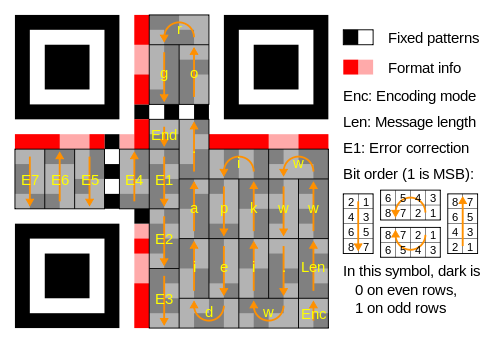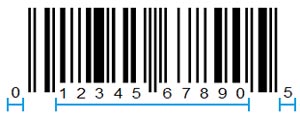- My Forums
- Tiger Rant
- LSU Recruiting
- SEC Rant
- Saints Talk
- Pelicans Talk
- More Sports Board
- Fantasy Sports
- Golf Board
- Soccer Board
- O-T Lounge
- Tech Board
- Home/Garden Board
- Outdoor Board
- Health/Fitness Board
- Movie/TV Board
- Book Board
- Music Board
- Political Talk
- Money Talk
- Fark Board
- Gaming Board
- Travel Board
- Food/Drink Board
- Ticket Exchange
- TD Help Board
Customize My Forums- View All Forums
- Show Left Links
- Topic Sort Options
- Trending Topics
- Recent Topics
- Active Topics
Started By
Message
QR Codes - where do they come from and who keeps track so no duplicates are created?
Posted on 1/11/25 at 5:29 pm
Posted on 1/11/25 at 5:29 pm
Whatchagot?
Posted on 1/11/25 at 5:37 pm to The Mick
Sir, this is a Wendy's!
That'll be $3.50, sir. Please pull forward.
That'll be $3.50, sir. Please pull forward.
Posted on 1/11/25 at 5:38 pm to The Mick
You could save a lot of time and just ask ChatGPT
quote:
QR codes are generated by a wide range of systems and platforms, and there isn't a single central authority that tracks every QR code. However, there are mechanisms in place to ensure that QR codes are unique and that duplicates are avoided, depending on the use case. Here's an explanation of how QR codes are generated and how duplicates are avoided:
1. QR Code Generation:
QR codes are typically created by:
Websites and apps: Many online tools and apps allow users to generate QR codes by inputting data (such as a URL, contact information, or text).
Businesses and organizations: Companies may generate custom QR codes for their products, marketing campaigns, or internal use.
Developers: QR code generation can be automated through software libraries in programming languages like Python, Java, etc.
When a QR code is generated, it encodes data in a specific pattern. The pattern is derived from the data being encoded (e.g., a URL or some other text) and the version, error correction, and encoding mode chosen. The data itself, along with other settings (like error correction level), determines the unique arrangement of black and white squares (modules) that form the QR code.
2. Unique Data (Avoiding Duplicates):
To avoid creating duplicate QR codes, the data being encoded in the QR code must be unique for each use case. For example:
URLs: A URL like "LINK ; will generate a different QR code than "LINK ; because the data encoded is different.
Text: QR codes created for specific text messages will differ depending on the content.
Unique Identifiers: QR codes used in inventory systems, events, or ticketing often encode unique identifiers (such as a serial number or ticket ID), which ensures that each QR code is distinct.
3. Who Ensures Uniqueness?:
The responsibility of ensuring that QR codes are unique depends on the application and context in which they are used:
Businesses: Organizations generating QR codes for specific purposes (like ticketing, promotions, or product tracking) are responsible for ensuring that each QR code they generate encodes unique data.
For instance, a company issuing event tickets will generate a unique QR code for each ticket. The system used to generate these tickets (or their unique identifiers) will ensure no two tickets (and therefore no two QR codes) are the same.
Public QR Code Systems: In cases where QR codes are used in public systems, like linking to web pages or services, it’s the responsibility of the website or service owner to ensure the content that a QR code links to is unique.
4. QR Code Databases:
Some organizations or services may keep track of QR codes in databases, particularly in cases where QR codes are used for tickets, inventory systems, or personalized services. These systems would ensure that each generated QR code corresponds to unique, non-repeating data (such as a product code or a unique URL).
5. Avoiding Duplicates in Practice:
Data-driven uniqueness: When generating QR codes, the system typically ensures that the data being encoded is unique, and thus the resulting QR code will also be unique.
Automated generation: Many systems rely on automated processes to generate QR codes, which often include logic to prevent the duplication of data.
QR Code Management Systems: In some cases, a central service or platform might help organizations manage and track their QR codes. For example, a marketing campaign that uses a QR code on promotional material might use a platform to track which codes are scanned and ensure that each generated code is linked to unique content.
6. Limitations of Uniqueness:
It's important to note that while QR codes can be made unique by ensuring the data they encode is unique, technically there is a finite number of possible QR codes due to the finite number of possible data combinations (as we discussed earlier). However, the number of unique QR codes that can be generated is so vast (on the order of quintillions) that it's highly unlikely there would be an issue with duplication unless someone manually generated codes with identical data.
In Conclusion:
QR codes are created by individuals, businesses, and automated systems that encode specific data into the QR code format.
The uniqueness of QR codes is determined by the unique data encoded in them, and businesses or systems that use QR codes are generally responsible for ensuring that the data encoded is unique.
There is no central authority that tracks every QR code globally, but systems and businesses that rely on QR codes often have their own mechanisms in place to ensure that duplicates are avoided.
This post was edited on 1/11/25 at 5:40 pm
Posted on 1/11/25 at 5:39 pm to The Mick
1. QR codes were invented in Japan as a data formatting standard for auto parts
2. There is no database of qr codes, you can have duplicates because it is just an encoding standard.
3. There are iso standards like 18004 that explain how to encode and decoding the data works
2. There is no database of qr codes, you can have duplicates because it is just an encoding standard.
3. There are iso standards like 18004 that explain how to encode and decoding the data works
Posted on 1/11/25 at 5:40 pm to The Mick
A QR code is just text in a different scannable form, like a barcode is just numbers represented by scannable lines.
The same way that web addresses can't be duplicated, QR codes can't be either. All they are is a dot matrix that represents text.
Posted on 1/11/25 at 6:02 pm to The Mick
By definition, a QR code is unique. It's based off of math, and I don't understand all the magic behind it, but the text of the site is encoded in the QR. You cannot have duplicates unless the site it's linking to is also duplicated. As someone else said, it's similar to a bar code, but a good bit more complex.
Tons of sites will let you create one. I've made many in my career.
Tons of sites will let you create one. I've made many in my career.
Posted on 1/11/25 at 6:43 pm to The Mick
Maybe this can help in how software+camera reads them. It's not a truly unique layout on each but a system.

Same with traditional barcodes. These images are part of a process for each...Google how to decode them.



Same with traditional barcodes. These images are part of a process for each...Google how to decode them.


This post was edited on 1/11/25 at 6:44 pm
Posted on 1/11/25 at 8:04 pm to blue_morrison
What was wrong with the barcode system? The QR code is big and bulky.
Posted on 1/11/25 at 8:38 pm to Bamafig
You can have more complex text encoded within it
Posted on 1/11/25 at 9:36 pm to Bamafig
Data density. Barcodes can only hold a couple dozen characters, usually only numbers. Qr codes can hold a few thousand characters including letters numbers and symbols.
Posted on 1/11/25 at 9:37 pm to The Mick
QR codes are the two dimensional offspring of original one dimensional barcodes commonly seen on groceries.
Two Americans, Bernard Silver and Norman Joseph Woodland, created the first barcodes in the late 1940s / early 50s and got it patented in 1952. The original was bullseye (circular) shaped.
They sold the patent in 1962 to an entity called Philco, who sold it to RCA in 1971. (Between the 1960s and 1970 a competing variation was used to track rail cars.) But RCA had a demo at some expo that got IBM's attention... who went on to develop what is known as the IBM UPC ( universal product code).
The UPC code, which went live in grocery stores in 1974, is basically a binary string of white or black (just like the 0s and 1s in binary language) read in a straight line (an improvement over the original bullseye shape which became inaccurate if there was any smearing). It can vary in length, but the IBM UPC variant is a standardized... I forget, but roughly 96 unit long string, with a certain length on each end acting like brackets for the middle part, and the remaining 80 or 90 units forming a 12 digital number when converted from the binary display of bars.
The QR code is a 2 dimensional evolution of the original 1D barcode. As someone else mentioned, it was created in Japan by a Toyota subsidiary, Denso Wave, to track auto parts, though the same article I'll link also lists a guy named as David Allais as the main inventor.
Storing information in 2 dimensions increased info storage capacity by a magnitude that can be over 100x over a standard 1D barcode, and inclusion of a greater number of fields of data beyond a serial number and price and maybe another one or two fields.
The tech has advanced with 3D barcodes as well, which can either be a function of barcodes having actual depth or use of colors to represent layers. This allows not only the possibility of more data, but more features, security, etc.
As another poster stated, duplicates are avoided by the central system that creates them. It is feasible that someone could learn the binary structure of a 1D barcode and fake it to relabel items. That becomes way harder if not practically impossible when you move to 2D.
Some links on this history from a site called laserappraiser...
LINK
LINK
LINK
Two Americans, Bernard Silver and Norman Joseph Woodland, created the first barcodes in the late 1940s / early 50s and got it patented in 1952. The original was bullseye (circular) shaped.
They sold the patent in 1962 to an entity called Philco, who sold it to RCA in 1971. (Between the 1960s and 1970 a competing variation was used to track rail cars.) But RCA had a demo at some expo that got IBM's attention... who went on to develop what is known as the IBM UPC ( universal product code).
The UPC code, which went live in grocery stores in 1974, is basically a binary string of white or black (just like the 0s and 1s in binary language) read in a straight line (an improvement over the original bullseye shape which became inaccurate if there was any smearing). It can vary in length, but the IBM UPC variant is a standardized... I forget, but roughly 96 unit long string, with a certain length on each end acting like brackets for the middle part, and the remaining 80 or 90 units forming a 12 digital number when converted from the binary display of bars.
The QR code is a 2 dimensional evolution of the original 1D barcode. As someone else mentioned, it was created in Japan by a Toyota subsidiary, Denso Wave, to track auto parts, though the same article I'll link also lists a guy named as David Allais as the main inventor.
Storing information in 2 dimensions increased info storage capacity by a magnitude that can be over 100x over a standard 1D barcode, and inclusion of a greater number of fields of data beyond a serial number and price and maybe another one or two fields.
The tech has advanced with 3D barcodes as well, which can either be a function of barcodes having actual depth or use of colors to represent layers. This allows not only the possibility of more data, but more features, security, etc.
As another poster stated, duplicates are avoided by the central system that creates them. It is feasible that someone could learn the binary structure of a 1D barcode and fake it to relabel items. That becomes way harder if not practically impossible when you move to 2D.
Some links on this history from a site called laserappraiser...
LINK
LINK
LINK
Posted on 1/11/25 at 9:40 pm to The Mick
You know how computers work with 1s and 0s? That is what the black and white dots are.
eta - the actual encoding specification is much more complicated.
eta - the actual encoding specification is much more complicated.
This post was edited on 1/11/25 at 9:42 pm
Posted on 1/11/25 at 9:42 pm to The Mick
I’m not reading through any of that. But I have gotten several fake bracelets, necklaces, and other jewelry in the mail that looks like it’s from Amazon and asked me to scan the QR code. I’m assuming that it is fake and if you scan the QR code they can get information somehow. It’s all I’ve got.
This post was edited on 1/11/25 at 9:45 pm
Posted on 1/11/25 at 9:54 pm to caill430
quote:
I’m not reading through any of that. But I have gotten several fake bracelets, necklaces, and other jewelry in the mail that looks like it’s from Amazon and asked me to scan the QR code. I’m assuming that it is fake and if you scan the QR code they can get information somehow. It’s all I’ve got.
That's a brushing scam. Do not scan those ever lol
Posted on 1/11/25 at 10:03 pm to caill430
quote:
But I have gotten several fake bracelets, necklaces, and other jewelry in the mail that looks like it’s from Amazon and asked me to scan the QR code. I’m assuming that it is fake and if you scan the QR code they can get information somehow. It’s all I’ve got.
In my longer answer above, I finished by saying it was probably difficult to fake QR codes (2D barcodes). But seeing your post made me rethink that... If a company or person controls their own database they can probably embed some security. However, these days, anyone who can get close enough to QR coded items with a good cell phone camera can probably create fake duplicates. Not sure what advantage they might gain, but it's worth clarifying.
... and pretty much anyone can acquire QR code software to make them. So, yes, if a scammer get you to scan their codes, it can be leading you into a trap.
This post was edited on 1/11/25 at 10:11 pm
Popular
Back to top

 10
10












